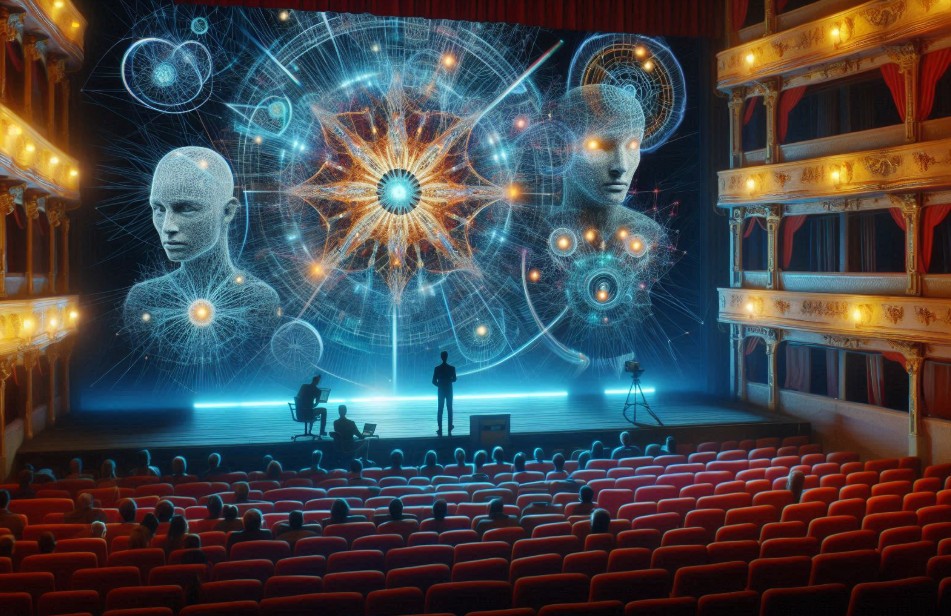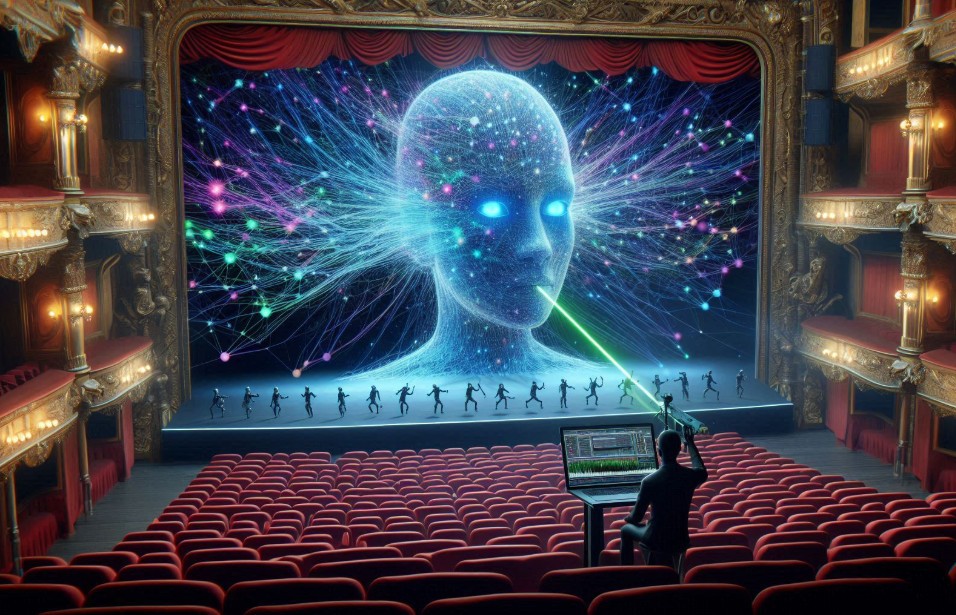In recent years, there has been a significant advancement in the field of Artificial Intelligence (AI) and Augmented Reality (AR). These technologies have become increasingly popular and have the potential to enhance virtual experiences in various fields such as gaming, education, healthcare, and...
Neural Networks Creating Visual Effects for Theater

Modern artistic productions are constantly evolving, blending creativity with advancements in technology. This fusion has unlocked new possibilities for captivating audiences, offering experiences that were once unimaginable. The stage has become a space where imagination meets groundbreaking tools, reshaping how stories are told.
Among these innovations, artificial intelligence has emerged as a powerful ally for creative professionals. By enabling dynamic and responsive designs, it adds depth and complexity to live performances. This synergy between human artistry and cutting-edge tools is redefining traditional approaches, pushing the boundaries of what is achievable in live productions.
From interactive backdrops to dynamic lighting and immersive environments, the latest advancements are reshaping how audiences connect with stories. These tools allow performers and designers to experiment in ways that enhance storytelling and bring fresh energy to cultural performances. The result is a more engaging and memorable experience for viewers.
The Role of AI in Modern Theater
Artificial intelligence has become a vital tool in redefining creative expression on stage. By integrating cutting-edge algorithms into artistic productions, creators can explore new dimensions of storytelling, crafting scenes that captivate and inspire audiences. This collaboration between technology and performance art is reshaping traditional methods and elevating live entertainment to unprecedented levels.
One of the key contributions of AI lies in its ability to analyze and adapt in real-time. This adaptability allows for dynamic stage environments that respond to the flow of the performance, creating an immersive atmosphere. Designers can generate intricate backgrounds, adjust lighting, or modify projections seamlessly, enhancing the emotional depth of the narrative.
Moreover, these intelligent systems empower directors and performers to experiment with innovative ideas without being limited by conventional tools. From creating interactive storylines to simulating complex environments, AI provides a flexible and efficient platform for bringing bold visions to life. This technology fosters a deeper connection between the audience and the art, enriching the overall experience.

How Advanced Algorithms Enhance Stage Design
The integration of intelligent technologies has opened a new chapter in set creation for live performances. By automating complex tasks and offering innovative tools, these systems allow designers to craft environments that are both visually stunning and emotionally resonant. The result is a seamless blend of art and science, transforming how stories are brought to life on stage.
Dynamic Backdrops and Interactive Settings
One of the most significant advancements is the ability to generate dynamic scenery that evolves in real-time. Whether it’s a shifting landscape or an interactive projection that reacts to a performer’s movements, these tools bring an unparalleled level of interactivity. This approach not only captivates audiences but also allows creators to push the boundaries of traditional stagecraft.
Precision and Creativity in Design
Intelligent systems also empower designers to experiment with intricate patterns, lighting schemes, and three-dimensional elements. By analyzing input data and simulating outcomes, these tools provide precise control over every aspect of a scene. This fusion of precision and creativity enables the creation of immersive environments that would be challenging or time-consuming to achieve using conventional methods.
By leveraging these innovations, stage design has evolved into a more dynamic and flexible process, capable of delivering unique and memorable experiences for every performance.
Creative Potential of Technology in Performances
The integration of modern innovations into stage productions has unlocked new possibilities for artistic expression. By combining creativity with advanced tools, performers and directors can craft engaging and immersive experiences that captivate audiences. These developments are redefining how stories are shared, allowing for more dynamic and interactive performances.
One of the most remarkable aspects of these advancements is the ability to generate content that evolves with the performance. Interactive elements, such as adaptive lighting, responsive soundscapes, and digital projections, bring an added layer of depth to the narrative. This adaptability enables creators to craft scenes that feel alive and connected to the emotions being portrayed on stage.
Additionally, the use of intelligent systems has made it easier to experiment with bold ideas and complex concepts. From creating surreal landscapes to simulating abstract concepts visually, technology offers an expansive toolkit for pushing the boundaries of traditional storytelling. This synergy between human imagination and innovative solutions enriches the art form, leaving audiences with unforgettable memories.



